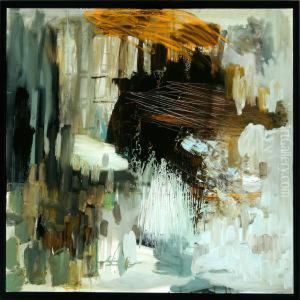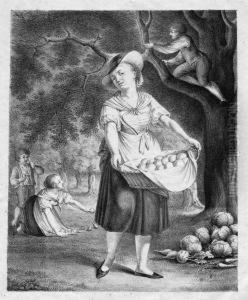Julie Von Egloffstein Paintings
Julie von Egloffstein was born on February 16, 1792, in Hildburghausen, Germany, into the aristocratic Egloffstein family. She was a talented artist, recognized primarily for her work as a painter and illustrator. Her life spanned an era of significant cultural and political changes in Europe, which influenced her work and career. Despite the constraints placed on women in the arts during the early 19th century, von Egloffstein managed to carve out a name for herself in the art world, a testament to her skill and determination.
Von Egloffstein received her early education in the arts from various tutors and artists, a common practice for women of her social standing at the time. She demonstrated an early aptitude for drawing and painting, which was nurtured and developed through her studies. Her work encompassed a range of subjects, including portraiture, landscapes, and historical scenes. Julie was also known for her illustrations, contributing to various publications and literary works, showcasing her versatility as an artist.
In addition to her artistic pursuits, Julie von Egloffstein served as a lady-in-waiting at various German courts, a position that allowed her to network with influential figures in the arts and society. These connections undoubtedly provided her with opportunities to exhibit her work and gain commissions. Despite the societal constraints of her era, she traveled extensively, which broadened her horizons and influenced her artistic style. Her travels took her across Europe, including stays in Italy, a center for artists seeking to study the masterworks of the Renaissance and the natural beauty of the Italian landscape.
Von Egloffstein's contributions to the arts were recognized in her time, and she was known for her refined technique and ability to capture the essence of her subjects. Her portraits, in particular, were celebrated for their sensitivity and depth of character. However, like many women artists of her period, Julie von Egloffstein's work was often overshadowed by her male counterparts, and she did not achieve the same level of fame as some of her contemporaries.
Julie von Egloffstein died on April 21, 1869, in Dresden, Germany. Her legacy as an artist is a reflection of her resilience and talent in overcoming the gender barriers of her time to pursue her passion for art. Today, her work is recognized for its contribution to the artistic movements of the 19th century, and her life story serves as an inspiration for women artists navigating the challenges of the art world.

